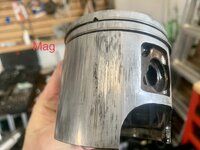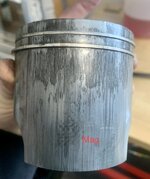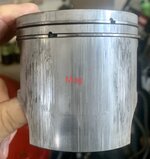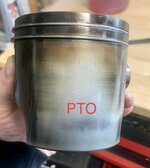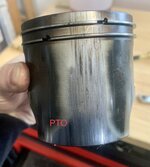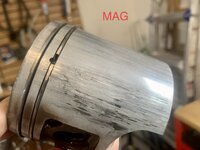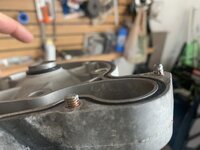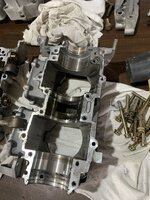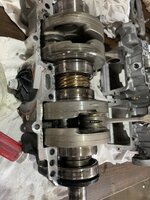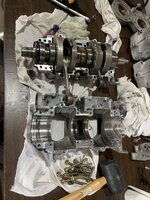T
Greetings,
I could really use some help determining if I need more than a new top end. I just pulled my heads off of my sled because I had very little compression and was preparing to replace the top end.
Can someone please let me know your thoughts on the sides of these pistons? Did a ring wear out? Not enough oil? Too much heat? Do I have a larger problem? To me it seems it would be a lack of oil/heat issue, but I don’t have a ton of experience and am only speculating. The mag side is the biggest concern but the PTO side shows a bit of the same problem. Let me know if better pics would help… it’s midnight and I don’t have the best light.
If it was your sled, what would you do? Should I do more than just a top end?
Other relevant facts:
2012 RMK Pro 600 w/ 155 track. Mileage is about 2500.
I just bought the sled a few months ago so don’t know the history of it. The guy I bought it from said he took good care of it. I had no reason to doubt him. Maybe I’m a sucker…
I initially thought I had an exhaust valve issue. Have them a good cleaning but it didn’t fix the issue at all. I then did the compression test and found out I had bigger problems.
This all started because I kept fouling the mag side plug.
PS - The pic showing both pistons shows the PTO side in the foreground.
Thank you for any help you provide!!
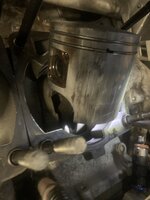
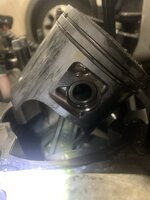
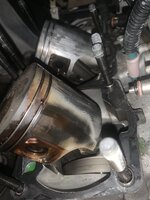
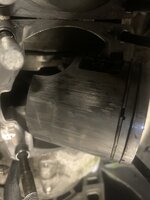
I could really use some help determining if I need more than a new top end. I just pulled my heads off of my sled because I had very little compression and was preparing to replace the top end.
Can someone please let me know your thoughts on the sides of these pistons? Did a ring wear out? Not enough oil? Too much heat? Do I have a larger problem? To me it seems it would be a lack of oil/heat issue, but I don’t have a ton of experience and am only speculating. The mag side is the biggest concern but the PTO side shows a bit of the same problem. Let me know if better pics would help… it’s midnight and I don’t have the best light.
If it was your sled, what would you do? Should I do more than just a top end?
Other relevant facts:
2012 RMK Pro 600 w/ 155 track. Mileage is about 2500.
I just bought the sled a few months ago so don’t know the history of it. The guy I bought it from said he took good care of it. I had no reason to doubt him. Maybe I’m a sucker…
I initially thought I had an exhaust valve issue. Have them a good cleaning but it didn’t fix the issue at all. I then did the compression test and found out I had bigger problems.
This all started because I kept fouling the mag side plug.
PS - The pic showing both pistons shows the PTO side in the foreground.
Thank you for any help you provide!!







